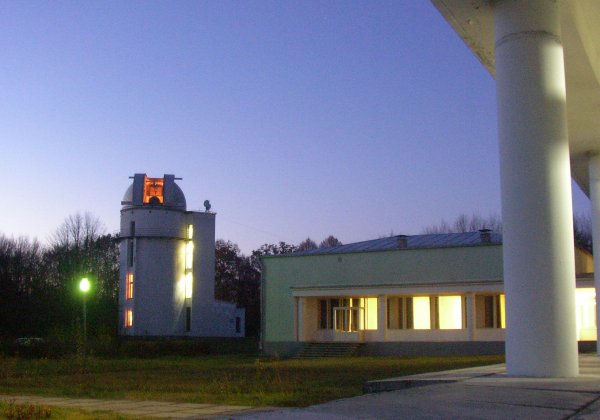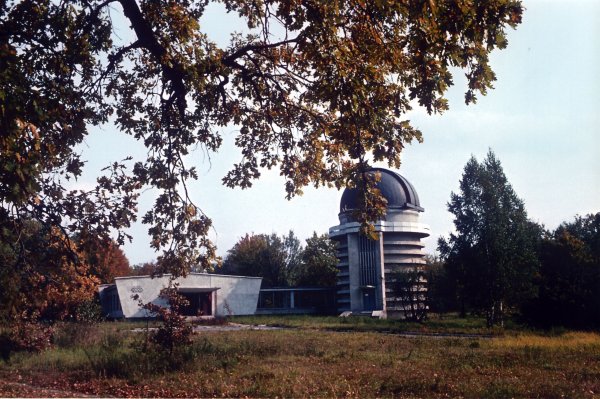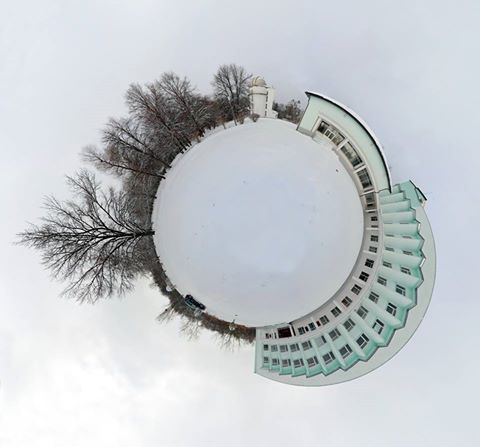Astrographs
The Tepfer–Steingel double astrograph
The Tepfer double astrograph (D=40 cm, F=550 cm) one of the first instruments installed at the Golosiiv site (1946). It is used for studying stellar proper motions, structure of the Galaxy, positions of the Solar System bodies, and Moon study. Observations are carried out in the International B, V system, down to 15m. A new dome for the double long-focus astrograph was completed in 1991.
 |
| The Tepfer–Steingel double astrograph |
The Zeiss double wide-angle astrograph
The Zeiss double wide-angle astrograph (D = 40 cm, F = 200 cm) was mounted in 1975. The limiting photographic magnitude is 16m. Planets, asteroids, and comets are observed with this instrument for compiling different catalogues. Plates obtained with this telescope are used for the Northern Sky Survey (FON).
 |
| The Zeiss double wide-angle astrograph |



 COORDINATES
COORDINATES